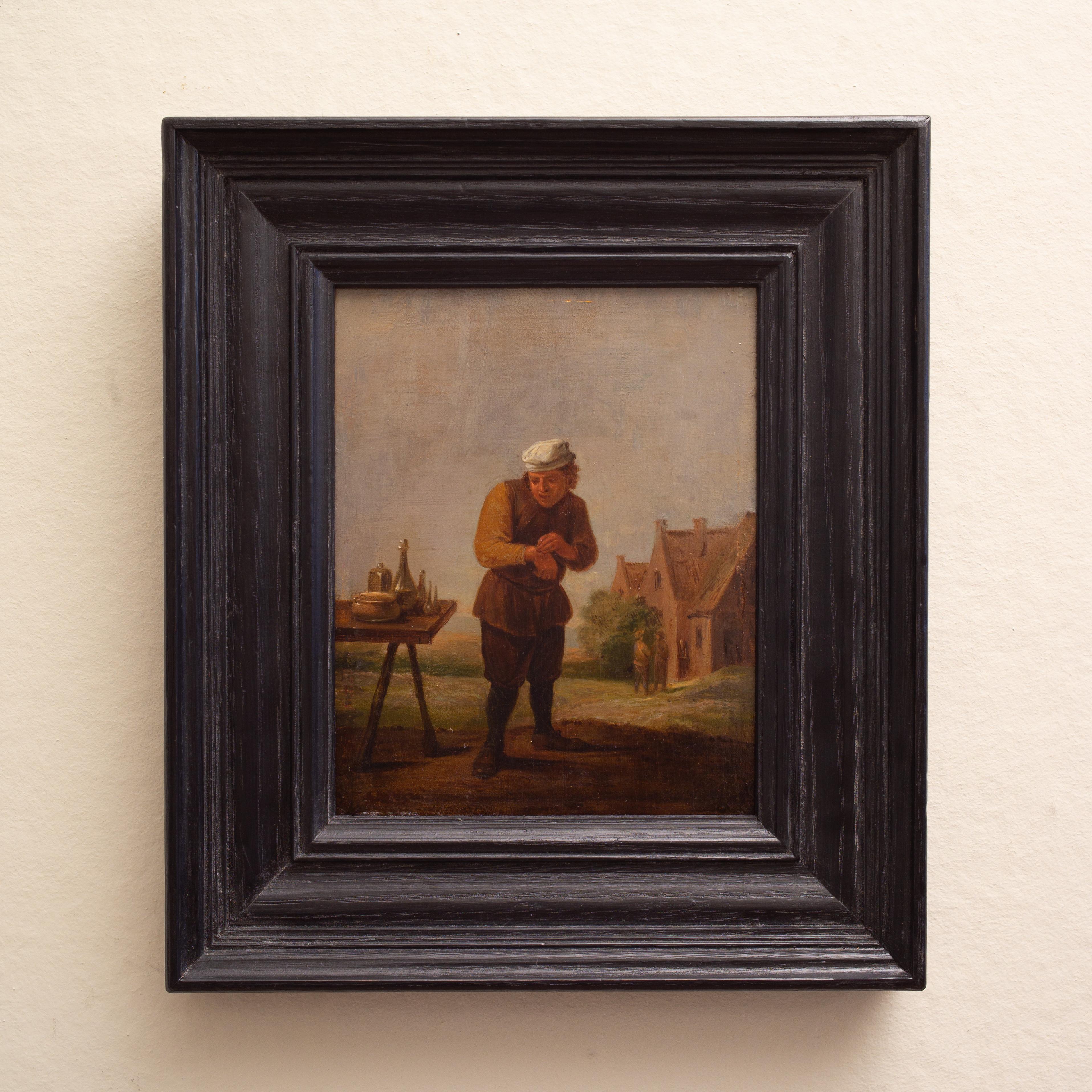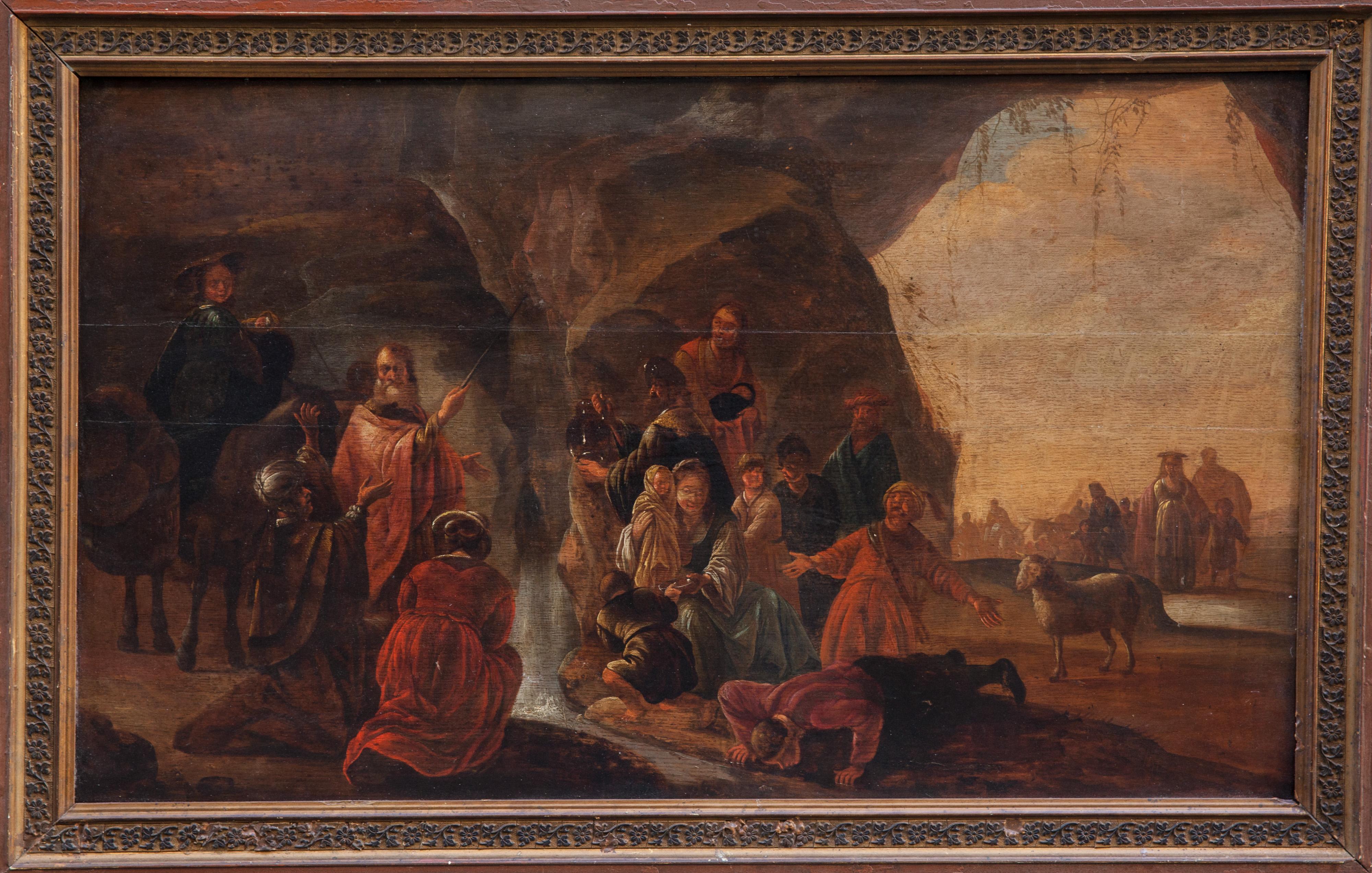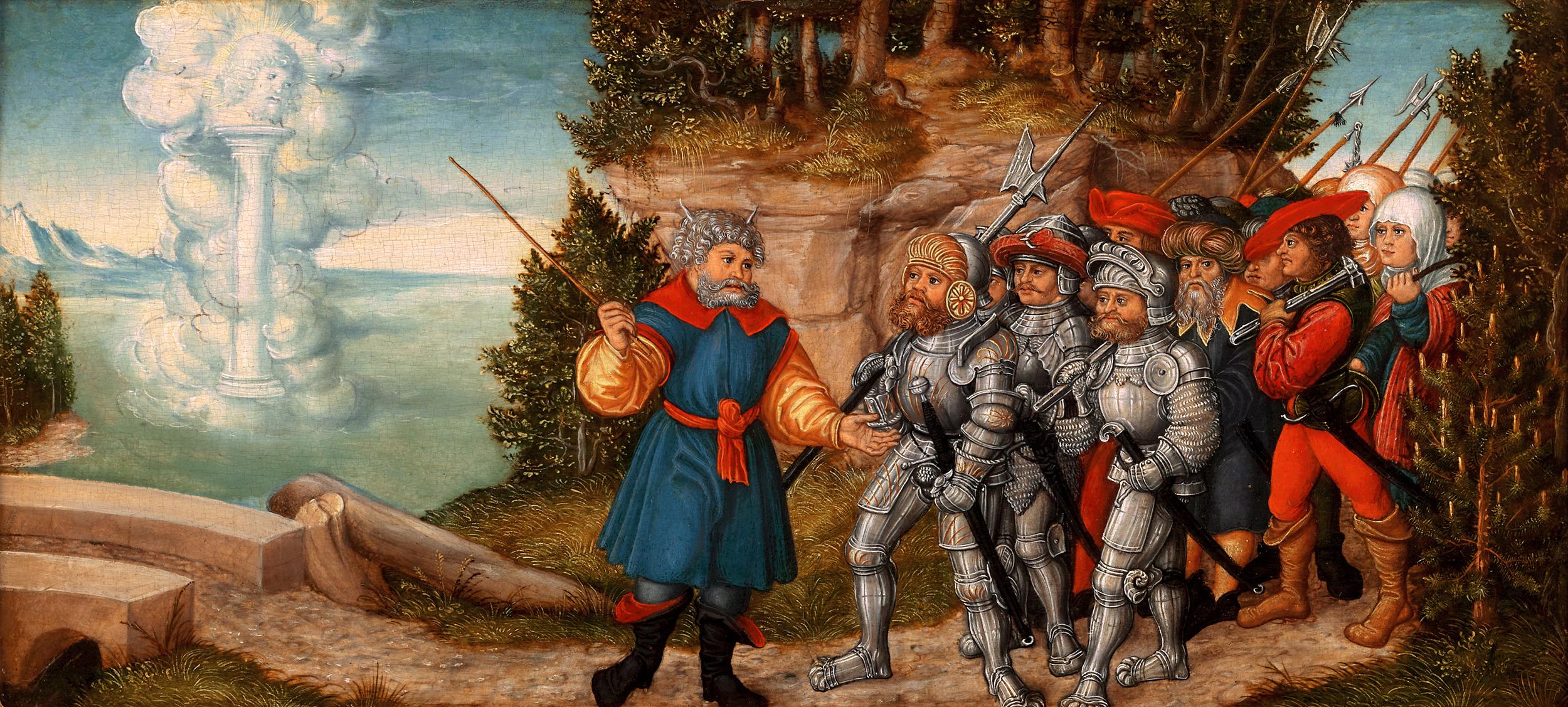Items Similar to 17th century Flemish Old Master painting - Vast landscape with a fortified town
Video Loading
Want more images or videos?
Request additional images or videos from the seller
1 of 20
Lucas Van Uden (Antwerp 1595 - Antwerp 1672)17th century Flemish Old Master painting - Vast landscape with a fortified town
About the Item
17th century Flemish old master painting depicting a peaceful countryside scenery of a vast landscape with a fortified town visible in the distance by Lucas Van Uden
Lucas Van Uden's life unfolded against the backdrop of the rich artistic tapestry of the Dutch Golden Age. Born in Antwerp in 1595, Van Uden displayed an early aptitude for art, which led him to apprentice under the esteemed landscape painter Adam van Noort. Under Noort's guidance, Van Uden honed his skills and developed a keen eye for capturing the nuances of nature. Upon completing his apprenticeship, Van Uden embarked on a journey to further his artistic education, traveling throughout Europe to study the works of master painters. He drew inspiration from the breathtaking landscapes of Italy, the dramatic seascapes of the Netherlands, and the verdant countryside of his native Belgium.
Returning to Antwerp, Van Uden established his own studio and quickly gained recognition for his meticulously crafted landscapes. His paintings, characterized by their harmonious compositions and meticulous attention to detail, soon caught the eye of wealthy patrons and collectors across Europe. Van Uden's career flourished during a time of great artistic innovation and cultural flourishing in the Low Countries. He was deeply influenced by the works of his contemporaries, including Peter Paul Rubens and Jan Brueghel the Elder, with whom he often collaborated on collaborative projects.
In addition to his artistic pursuits, Van Uden was actively involved in the artistic community of Antwerp, serving as a mentor to aspiring painters and participating in the city's vibrant cultural life. His studio became a hub of artistic activity, attracting students and admirers from far and wide. Throughout his prolific career, Van Uden continued to refine his technique and explore new artistic possibilities. His landscapes evolved from early pastoral scenes to grand panoramic vistas, reflecting his growing mastery of the genre. His ability to capture the subtle interplay of light and shadow, the texture of foliage, and the atmospheric effects of weather set him apart as a true master of landscape painting.
Selected works in museum collections:
1. *The Valley of Peace* (1635) - Royal Museums of Fine Arts of Belgium, Brussels
2. *Sunset Over the River* (1648) - Louvre Museum, Paris
3. *Morning Mist* (1655) - Rijksmuseum, Amsterdam
4. *Golden Fields* (1662) - Metropolitan Museum of Art, New York
5. *A Clearing in the Forest* (1669) - National Gallery, London
These museum pieces showcase Van Uden's mastery of the landscape genre and his ability to capture the beauty and tranquility of the natural world. Each painting invites viewers to immerse themselves in the peaceful harmony of the countryside, reflecting the artist's deep appreciation for the wonders of nature.
The oil on panel measures ca. 49 cms by 71 cms and with its frame ca. 69 by 91 cms.
Literature on the artist:
1. *Lucas Van Uden: Master of Dutch Landscapes* by Karen Hope
2. *Lucas Van Uden and the Art of Landscape Painting* by Martin Kemp
3. *The Landscapes of Lucas Van Uden: A Visual Journey* by Elizabeth Jones
4. *Lucas Van Uden: A Critical Biography* by Jonathan Smith
5. *Lucas Van Uden and the Natural World* edited by Sarah Thompson
Provenance:
Private collection UK
Christie's sale 3 March 1950
private collection Germany
Verso panel marks of the Antwerp guilt, with Claessen (?) family brand
- Creator:Lucas Van Uden (Antwerp 1595 - Antwerp 1672) (1595 - 1672, Italian)
- Dimensions:Height: 19.3 in (49 cm)Width: 27.96 in (71 cm)
- Medium:
- Movement & Style:
- Period:
- Framing:Frame IncludedFraming Options Available
- Condition:Cleaned by our restorer in 2024. Lovely and ready to hang. Scattered inpainting visible under uv-light. Patina to the frame.
- Gallery Location:Antwerp, BE
- Reference Number:1stDibs: LU1423214137182
About the Seller
5.0
Platinum Seller
These expertly vetted sellers are 1stDibs' most experienced sellers and are rated highest by our customers.
Established in 2020
1stDibs seller since 2020
349 sales on 1stDibs
Typical response time: 4 hours
- ShippingRetrieving quote...Ships From: Antwerp, Belgium
- Return PolicyA return for this item may be initiated within 2 days of delivery.
More From This SellerView All
- 17th century Dutch seascape - Stormy sea with a Dutch Hoy - Marine BoatsLocated in Antwerp, BE17th century Dutch old master oil seascape, Stormy sea with boats including a Dutch Hoy and a Packet-Boat The present painting is a peaceful, yet very lively, seascape and a beautif...Category
17th Century Old Masters Landscape Paintings
MaterialsOil, Panel
- 17th century Flemish Old Master painting - Vast landscape with a majestic oakLocated in Antwerp, BE17th century Flemish old master painting depicting a forest landscape with a majestic oak Alexander Keirincx, born around 1600 in Antwerp, Belgium, was a prominent Flemish landscape...Category
17th Century Old Masters Landscape Paintings
MaterialsOil, Panel
- 17th century Flemish Old Master Painting - Paris presenting Helena to TroyLocated in Antwerp, BE17th century Flemish Old Master painting, Paris presenting Helena to Priam, Hecuba and the Trojan court, attributed to Hans III Jordaens The theme of our painting is derived from G...Category
17th Century Old Masters Figurative Paintings
MaterialsOil, Panel
- Large 17th century religious family painting - Mary with Christ and AnnaLocated in Antwerp, BE17th century Old Master painting depicting the Infant Christ with Mary and St. Anne attributed to Nicolas de Liemaker The artist of the present work wonderfully captured the loving gaze of Maria, looking in awe at her child. One can sense the tenderness and love in her eyes. The eyes of Christ appears to be filled with wisdom and love and a finely painted aura crowns his and his mother's heads. St. Anne, Mary's mother, gently holds the infant whilst gazing adoringly at him. The painting is not only a beautiful depiction of Christ and his mother and grandmother, but also a sweet image of the tender bond between a mother's and their children. The vibrant and soft colours of the fabric create a soft cocoon around the figures and seem to further emphasis the beauty and importance of the depicted scenery and its protagonists. Nicolaas de Liemaecker (also spelled as Liemaker or Liemackere) was a Flemish painter born in Ghent in 1601. He was also known under the name Nicolaas Roose. His father was Jacobus de Liemaecker, a painter upon glass. Nicolaas is reported to have been trained by his father and Gaspard de Crayer II (1), an apprenticeship with Otto Van Veen has also been suggested. In 1624 he worked at the Court of the Bishop of Paderborn and for Ferdinand of Bavaria. He later returned to his native city, where he focused on religious and historical paintings. He was a very accomplished and celebrated artist who attained a high rank in his profession. He witnessed the baptisms of Pieter and Janne-Marie Van Hulle...Category
17th Century Old Masters Figurative Paintings
MaterialsCanvas, Oil
- Large 17th century Italian old master - Noli me tangere - Christ in the gardenBy Pier Francesco CittadiniLocated in Antwerp, BELarge 17th century Italian old master - Noli me tangere - Christ in the garden with Mary Magdalene The Italian art historian Federico Zeri has conserved a painting in his archives w...Category
17th Century Old Masters Figurative Paintings
MaterialsCanvas, Oil
- 17th century Dutch Old Master - Summertime landscape of Kleve in 1661Located in Antwerp, BE17th century Dutch old master painting "A summer day in Kleve in 1661" Our painting depicting a whimsical vibrant blue sky, was long believed to depict an Italian landscape. However, during archival research, an old identification referring to the city of Kleve emerged. Further research led to discovery of a very similar structure on a painting by Jan van der Heyden of Cleves from the vantage point of the Mühlberg. Gerrit Berckheyde was born on June 6, 1638, in Haarlem, a bustling city in the Netherlands during the Dutch Golden Age. He was raised in a time of significant cultural and economic prosperity, which greatly influenced his artistic development. Berckheyde's passion for painting emerged at a young age, and he began his artistic journey under the tutelage of his older brother, Job Berckheyde, who was also a skilled painter. Under Job's guidance, Gerrit honed his skills and developed a keen eye for detail and composition. He showed a particular interest in capturing urban landscapes, drawn to the bustling streets and architectural marvels of cities like Haarlem and Amsterdam. Berckheyde's early works often depicted scenes of daily life, marketplaces, and cityscapes, reflecting the vibrancy and energy of Dutch urban centers. As Berckheyde matured as an artist, his style evolved, becoming more refined and sophisticated. He perfected his technique of rendering architectural elements with remarkable precision, paying close attention to perspective, light, and shadow. His paintings exuded a sense of realism and authenticity, transporting viewers to the heart of bustling city streets and market squares. Berckheyde's talent and artistic vision soon gained recognition, earning him commissions from prominent patrons and collectors. His works became highly sought after, not only for their aesthetic appeal but also for their historical significance. Through his paintings, Berckheyde documented the urban landscape of his time, preserving a visual record of Dutch society during the 17th century. Today, Berckheyde's paintings can be found in renowned museums and art collections around the world. In the Netherlands, his works are prominently displayed in institutions such as the Rijksmuseum and the Mauritshuis, where they continue to captivate audiences with their beauty and historical insight. Internationally, examples of his art can be seen in museums like the Metropolitan Museum of Art in New York City and the National Gallery in London, where they contribute to the rich tapestry of Dutch Golden Age painting. Gerrit Berckheyde's legacy as a master of Dutch cityscape painting...Category
17th Century Old Masters Landscape Paintings
MaterialsOil
You May Also Like
- A Peasant Removing a Plaster: The Sense of Touch. By a Follower of David TeniersBy David Teniers the YoungerLocated in Stockholm, SEDavid Teniers the Younger (1610-1690) Follower of A Peasant Removing a Plaster: The Sense of Touch signed T on the table oil on panel panel size 7,20 x 5,55 inches (18,3 x 14,4 cm)...Category
Early 18th Century Old Masters Figurative Paintings
MaterialsPanel, Oil
- Italian Landscape With Figures at a Waterfall by a Follower of Jan van HuysumBy Jan Van HuysumLocated in Stockholm, SEThere are so many details to fall in love with in this 18th-century painting depicting an Italianate landscape, for example, the delicately painted figures having a conversation and ...Category
Early 18th Century Old Masters Landscape Paintings
MaterialsWood Panel, Oil
- Dutch School, 17th Century, Shipping in a Stiff Breeze, a City BeyondLocated in Stockholm, SEWe are delighted to present a significant piece from the Dutch School, most likely dating back to the late 17th century. This captivating painting showcases the dynamic force of nature with three ships vigorously navigating through stormy waters. The foreground is a scene of nautical struggle, as figures are depicted working intensely with the sails, steering, and bracing against the tumultuous sea. In the serene background, the silhouette of a quaint town emerges, with spires from churches and the outlines of various buildings is visible. This juxtaposition of the calm town against the chaotic foreground serves as a powerful reminder of the unpredictability of life and nature. Dominating the canvas, the sky occupies two-thirds of the painting, filled with brooding clouds that occasionally break to reveal patches of blue. The presence of birds adds a dynamic element to the otherwise ominous atmosphere. While the artist remains unknown, the work is quintessentially Dutch in its execution, with meticulous attention to detail and a profound understanding of maritime life. The painting's oval shape is quite distinctive and is complemented by a suitably antique octagonal black frame, which adds to its historical charm. This piece is a testament to the mastery of Dutch maritime painting...Category
17th Century Old Masters Landscape Paintings
MaterialsOak, Oil, Wood Panel
- Moses Strikes the Water from the Rock. XVII cent. Dutch school.Located in Firenze, ITMoses Strikes Water from the Rock Dutch school, XVII century. Workshop of Jacob de Wet (Haarlem, 1610-1675). Technique: Oil on oak wood panel, composed of 3 horizontal panels. In this evocative work, Moses stands in a cave, gathering the Israelites. There was no water to drink or for their cattle. The people were discontented in the desert. But Moses and Aaron listened to the voice of God. With Aaron’s staff, Moses struck the rock, and water gushed forth abundantly, quenching their thirst. Jacob de Wet’s workshop specializes in subjects from the Old and New Testaments. The recognizable rectangular format, simple compositions, and clear narratives define his style. The interplay of light and shadow, reminiscent of Rembrandt, adds timeless allure. The characters’ costumes, with their large hats and turbans...Category
17th Century Old Masters Figurative Paintings
MaterialsOil, Wood Panel
- Moses and the Pillar of Cloud by Lucas Cranach the Elder and StudioBy Lucas Cranach the ElderLocated in New Orleans, LALucas Cranach the Elder and Studio 1472-1553 German Moses and the Pillar of Cloud Oil on panel Moses and the Pillar of Cloud is a bold and evocative composition that showcases the signature intense color and intricate detail of Lucas Cranach the Elder’s celebrated oeuvre. The remarkable 16th-century oil on panel by Lucas Cranach and his studio captures the narrative moment when Moses leads the Israelites out of Egypt and encounters God manifested through a large pillar of cloud. Moses stands at the precipice of a bridge and turns back to soldiers helping to lead the group of Israelites who huddle closely together. Cranach depicts Moses with his traditional iconography, rendering the rays of light on his head which came to be interpreted as "horns" in the translation of the Bible. Using his traditional walking staff, Moses gestures toward the pillar, seemingly acknowledging that God will protect the group as they cross the bridge to the other side, leaving exile and entering a promised land. In a nod to Cranach’s Germanic locale, he renders the figures and setting in a manner that feels decisively more akin to European aesthetics than those of the Red Sea. Soldiers wear elaborate, gothic suits of armor that recall the livery of Northern European guardsmen. The terrain appears more like a European forest giving way to a sweeping valley than the arid landscape the Israelites trekked through on their journey across the Red Sea. Though still clearly recounting a story from the Old Testament, Cranach renders the cast of characters and setting in an earthly, familiar manner. This aesthetic shift speaks to Cranach’s own changing beliefs as he found himself at the center of the Protestant Reformation. After first gaining recognition in 1505 as the official painter of Frederick the Wise, Cranach established a thriving painting and print studio in Wittenberg, Germany. Cranach was renowned for his court portraits and genre paintings and was also well known for his association with the famous protestant reformer Martin Luther, then under the protection of Frederick the Wise. As Wittenberg became a bastion of new religious thought, Cranach soon befriended Luther and played an active role in creating the printed materials that proliferated throughout the Reformation...Category
16th Century Old Masters Figurative Paintings
MaterialsOil, Panel
- Antique English 19th century marine sceneBy William AndersonLocated in Woodbury, CTOutstanding English late 18th / early 19th century marine scene by one of Britain's best known and sought after painters. William (or Wiliam) Anderson (1757 – 27 May 1837) was a Scottish artist specializing in maritime and patriotic themes. He was well-regarded for his detailed and accurate portraits of ships under sail, exhibiting his works annually in London between 1787 and 1811 and then occasionally until 1834. Anderson influenced other artists, notably John Ward and others of the Hull school. Anderson's early life is obscure, but he is known to have trained as a shipwright before moving to London to become a maritime painter when he was about 30. His training served him well as a painter, providing "a practical nautical knowledge" of his subjects. He earned a reputation for "accuracy and refinement of detail" and was admired for his bright, clear colours. He worked in both oils and watercolours. He based his style on that of well-known Dutch maritime...Category
1810s Old Masters Figurative Paintings
MaterialsOil, Wood Panel
Recently Viewed
View AllMore Ways To Browse
Used Master Craft
Italian Old World
Antique Old World Art
Belgian Master
Drew Antique
Antique Flourishes
Flemish Masters
German Old Masters
Old Master Painting 17th Century
Thompson Antique
Old Master Flemish
Antique Studio Light
Old Forest Painting
Panoramic Landscape Painting
Elizabeth Olds
Collector Brand
1950 German Landscapes
17th Century Flemish Painting





